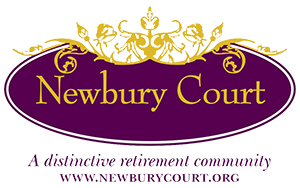Search
Thursday, May 2, 2019, Worcester Historical Museum
Saturday, May 4, 2019, Emmanuel Church, Boston
The Worcester performance included a fascinating pre-concert talk by James Moran, Harvard-Smithsonian Senior Radio Astronomer
The Boston concert is dedicated to the memory of Board Director Emeritus William Wolk.
Chaconne from Les Quatre Saisons Johann Christoph Schmidt (1664-1728)
String Quartet in Bb Major John Marsh (1752-1828)
Presto • Minuetto • Largo
Minuetto (Vivace) •Finale (Presto)
Sinfonia in D Major Johan Daniel Berlin (1714-1787)
Allegro • Largo • Allegro
Intermission
Quartet in G Major for flute, two violins, and cello, op. 2, no. 6 Carl Frederich Baumgarten (1740-1824)
Allegro • Adagio • Allegretto
Symphonia di Camera in F Minor William Herschel (1738-1822)
Allegro moderato
Adagio e cantabile
Allegro, ma non molto
Entrée des Astres, Ariette, and Chaconne from Castor et Pollux Jean-Philippe Rameau (1683-1764)
Kristen Watson, soprano
Suzanne Stumpf and Rachel Carpentier, traversi
Sarah Darling and Jesse Irons, violins
Marcia Cassidy, viola; Daniel Ryan, cello
Michael Bahmann, harpsichord
The Worcester concert is presented in collaboration with the Worcester Historical Museum and is supported, in part, by the Fletcher Foundation.
These concerts are funded, in part, by the Massachusetts Cultural Council, a state agency.
Program Notes
This program explores music written by Enlightenment-era composers who had strong scientific interests and achievements, along with works inspired by planets and constellations. The composer-scientists included on these concerts were influenced by Enlightenment thinking that emphasized observation, scientific inquiry, and betterment of society. Many of them also authored papers and books on both musical and scientific topics, most especially astronomy.
The chaconne that opens this program is excerpted from a large scale French-style divertissement entitled Les quatre saisons written by Johann Christoph Schmidt, the leader of the orchestra at the Dresden court of August the Strong. This work was one of the many lavish entertainments performed for the 1719 wedding of Crown Prince Friedrich Augustus to Maria Josepha, daughter of the Austrian Emperor. It was part of a days-long spectacle that became known as “The Festival of the Planets,” with its theme featuring the six ven known planets and their effect on humankind. Schmidt’s Les quatre saisons honored Venus, and its large-scale chaconne was among ballet works reportedly danced by more than 100 members of the court.
John Marsh was a learned man of means and many interests. He authored books and articles about astronomy, mathematical topics, religion, military matters, and music. Perhaps his greatest cultural contributions, however, are his extensive diaries that provide a revealing portrait of provincial English life at the time. Marsh was one of the most prolific English composers of this period, penning over 350 compositions, including 40 symphonies. His String Quartet in Bb Major is his only surviving work in the genre, although it is believed he wrote many. It is subtitled “Composed in imitation of the Stile of Haydn’s Opera Prima” and indeed follows closely many of the compositional techniques of Haydn’s early quartets. It is not a slavish imitation, however, and shows Marsh’s striking gift for melody and expression.
Norwegian composer, organist, and inventor Johan Daniel Berlin was a man of extraordinarily diverse accomplishments. He kept meteorological records for the city of Trondheim and published books and papers on a variety of subjects, including music theory and astronomy. Berlin’s sprightly Sinfonia in D Major originally called for cornetto as the solo instrument, an unusual scoring at the time as the cornetto was considered an archaic instrument by the mid-eighteenth century.
Carl Frederich Baumgarten was a violinist, organist, and composer with broad intellectual interests, including astronomy and mathematics. He was an important contributer to London’s musical life, serving as concertmaster at the Haymarket Theatre and Covent Garden. His Quartet in G Major was likely performed at a house concert of Baumgarten’s most important patron, Prince Henry, Duke of Cumberland (one of George III’s younger brothers). The work features an especially virtuosic violin part.
William Herschel, the pioneering astronomer and discoverer of Uranus, considered himself primarily a musician in the early part of his life. His exciting planetary discovery catapulted him to fame as an astronomer, a career trajectory shared by his sister Caroline who was also a talented musician and became his lifelong collaborator in the field of astronomy. Born in Hanover in 1738, his father sent him to England for refuge where, as a talented violinist, he quickly gained employment. Finding the London music scene too crowded in which to make a living, he moved to the Yorkshire area in the north where he become an active concert organizer and a teacher to children of the aristocracy. His Symphonia di Camera in F Minor was written in 1760 for the intimate musical gatherings at a country estate in Yorkshire. Its dramatic style, with its frequent dynamic contrasts, shows the influence of the Mannheim school, an aesthetic trend he was known to have been aware of.
Castor et Pollux was Jean-Philippe Rameau’s most successful opera, with initial performances in 1737 and a revival in 1754. The excerpt heard on these concerts is from the fi fth act, in which the heavens open, revealing the place in the zodiac constellations where the Gemini twins Castor and Pollux will ascend. In this scene, a character (identified in the score as “a constellation”) sings the ariette:
Shine, shine, new stars, / Adorn the skies, reign over the sea, / Guide mortals on the waters.
Triumph in the night, / Follow the star of day, / And vie with one another
For the glory of being useful to the world.
—Daniel Ryan and Suzanne Stumpf











Daniel Ryan and Suzanne Stumpf, Artistic Directors
349 Boston Post Road, Weston, MA 02493
tel. (781) 466-6694
All content © Musicians of the Old Post Road
Privacy Policy
Terms & Conditions
